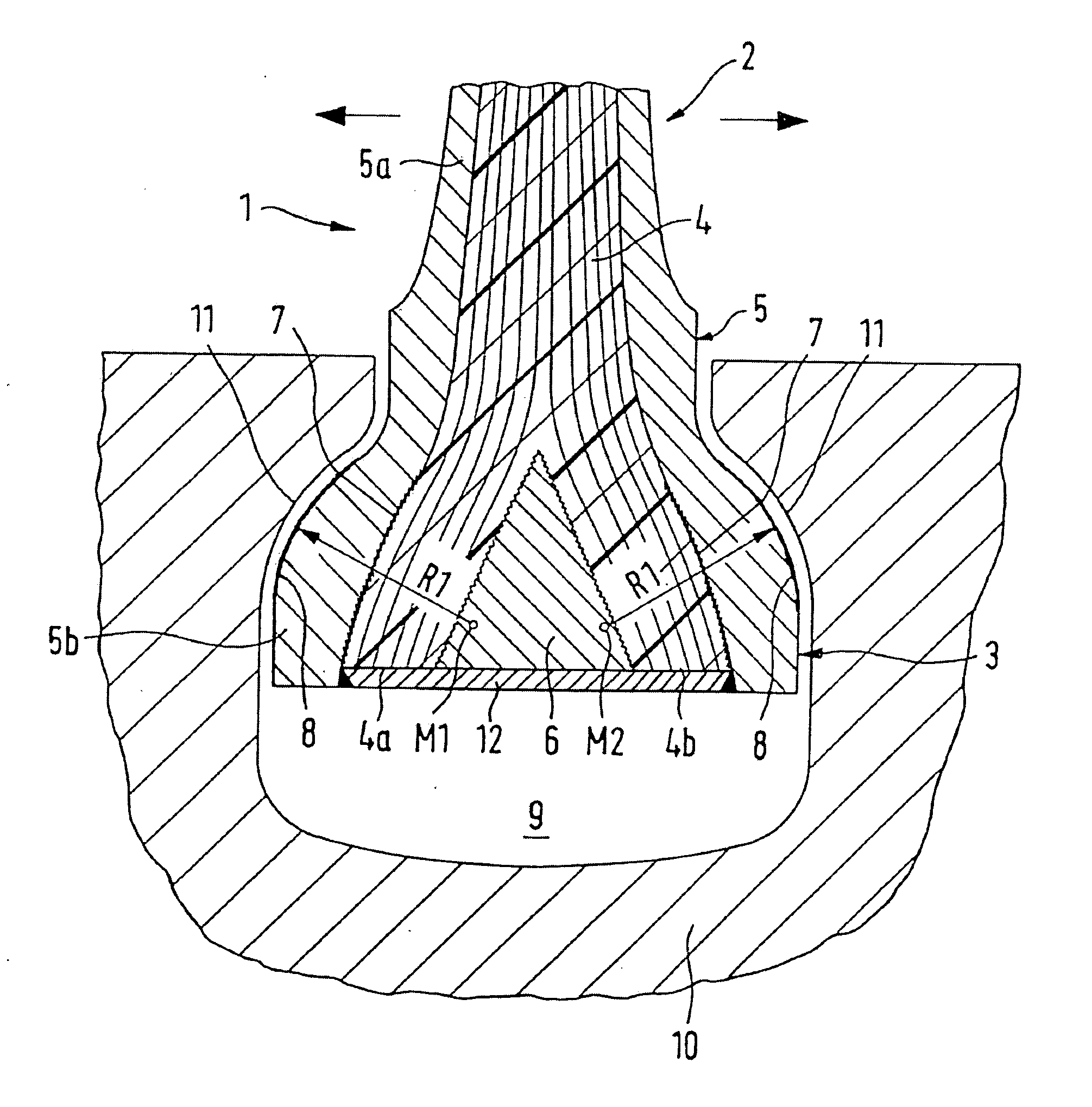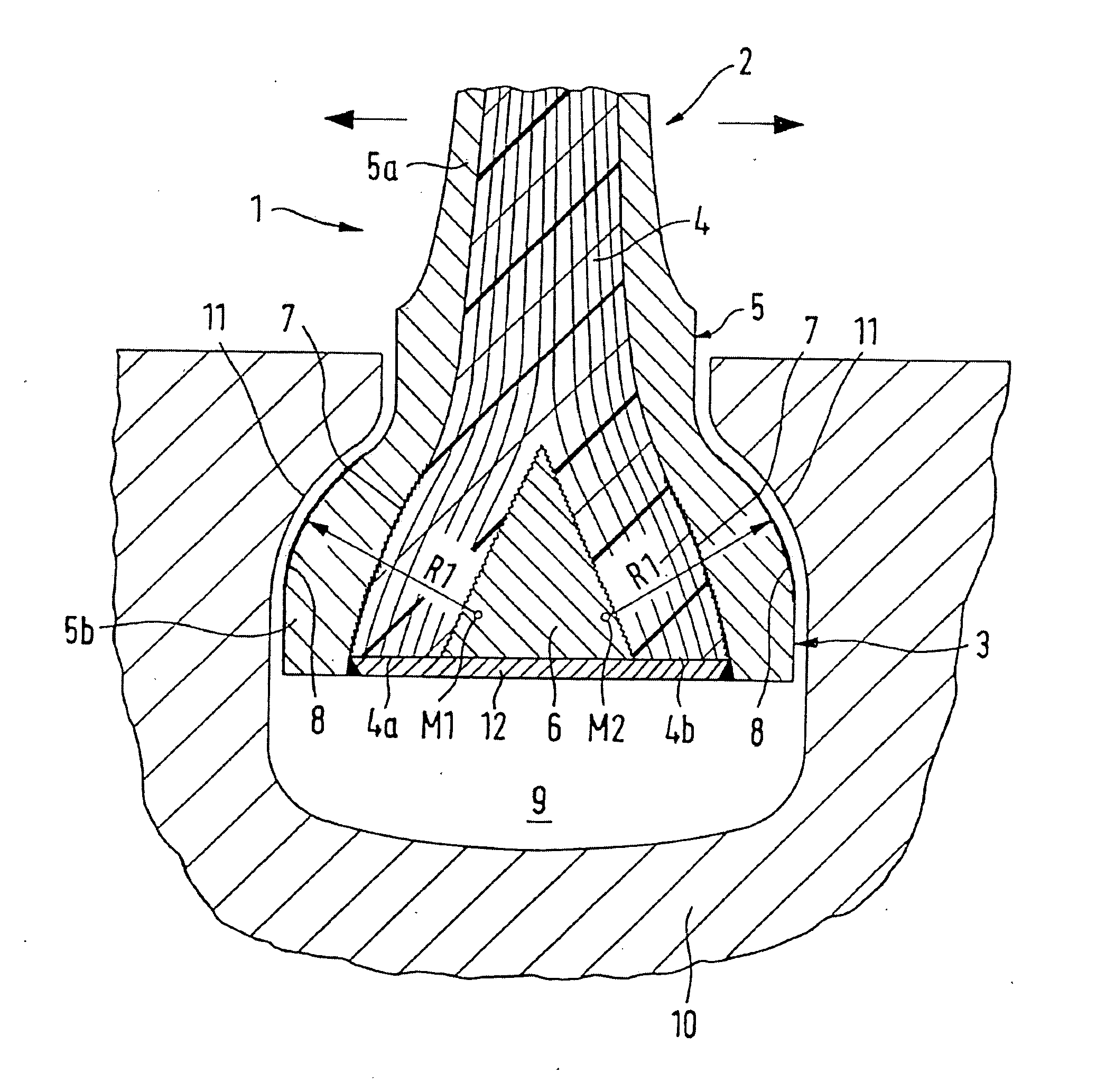Compressor blade root for engine blades of aircraft engines
a compression blade and engine technology, applied in the direction of machines/engines, electrochemical machining apparatus, climate sustainability, etc., can solve the problem that the fiber-composite core cannot stand up to the force, and achieve the effect of reducing the bending load of the fiber material, high force and favorable operation
- Summary
- Abstract
- Description
- Claims
- Application Information
AI Technical Summary
Benefits of technology
Problems solved by technology
Method used
Image
Examples
Embodiment Construction
[0014] The compressor blade 1 comprises an airfoil 2 and a blade root 3 and includes a fiber-composite core 4 and a metallic enclosure 5 with a thin-walled portion 5a in the area of the airfoil 2 and with a thick-walled portion 5b in the area of the blade root 3. In the blade root 3, a reinforcing wedge 6 divides the fiber-composite core 4 into two partial strands 4a, 4b to provide for high strength in the root area and to enable the high tensile forces acting upon the airfoil 2 to be effectively introduced into the blade root 3. Upon infiltration, a metal plate 12 is attached (for instance, by welding or other means) at the bottom end of the blade, preferably to the reinforcing wedge, to take up the clamping forces produced by the centrifugal loads and, thus, to reduce the mechanical pressure load on the carbon fibers.
[0015] Preferably, a large end of the wedge 6 is positioned below a fit of the blade root 3 to the compressor disk 10 to avoid delamination forces under centrifugal ...
PUM
| Property | Measurement | Unit |
|---|---|---|
| bending stress | aaaaa | aaaaa |
| pressure | aaaaa | aaaaa |
| area | aaaaa | aaaaa |
Abstract
Description
Claims
Application Information
 Login to View More
Login to View More - R&D
- Intellectual Property
- Life Sciences
- Materials
- Tech Scout
- Unparalleled Data Quality
- Higher Quality Content
- 60% Fewer Hallucinations
Browse by: Latest US Patents, China's latest patents, Technical Efficacy Thesaurus, Application Domain, Technology Topic, Popular Technical Reports.
© 2025 PatSnap. All rights reserved.Legal|Privacy policy|Modern Slavery Act Transparency Statement|Sitemap|About US| Contact US: help@patsnap.com


